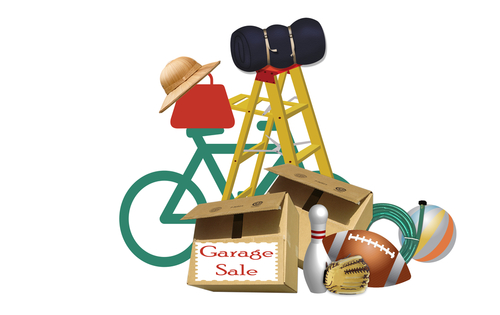Growing an Indoor Garden
 With several more weeks of winter to go, you might be hankering for some fresh greens, herbs or sprouts in your diet. Changes and improvements in lighting, soil and planting techniques mean that you can grow lovely plants in your home year round. You can have a simple herb garden or an elaborate hydroponic system.
With several more weeks of winter to go, you might be hankering for some fresh greens, herbs or sprouts in your diet. Changes and improvements in lighting, soil and planting techniques mean that you can grow lovely plants in your home year round. You can have a simple herb garden or an elaborate hydroponic system.
Container gardening is a collection of pots, jars, boxes or other containers that can hold a plant medium (soil, commercial soil-less mixtures, sand, bark or mulch). The medium supplies the plant’s roots with nutrients, moisture, air and physical support. Hydroponic or aquaponic gardening uses fertilized water (sometimes including live fish) as the growth medium.
9 indoor garden ideas:
Here are a variety of indoor gardening ideas. Add one to your décor and give your home a much-needed lift in the winter months.
- Terrarium: you can create a terrarium in a jar, hurricane lamp or unused fish tank.
- Force bulbs: Tulips, amaryllis, hyacinth, narcissus, crocus and other bulb plants can be “forced” to bloom indoors in the winter.
- Simple terra cotta pots: Start your herbs in small pots on the windowsill. In the spring, you can transfer them outside.
- Rock garden: Grow succulents or parasitic plants on a rock. Since they don’t need soil they can live for months with periodic watering.
- Hanging planters: When space is limited, hang planters on the wall or from a hook in the ceiling. A variety of options can be found at retailers like Home Depot.
- Mini greenhouse: For herbs, cherry tomatoes and other hothouse plants, try a mini greenhouse like this one at IKEA.
- Potted citrus trees: Grow you own oranges, lemons, limes or cumquats in an indoor pot and add some homegrown vitamin C to your diet.
- Mason jars: Set mason jars in the windowsill or shelf and grow simple herbs like rosemary, cilantro and basil.
- Plant table: Buy or build a garden table for your living room. A plant table is like a box with legs. You can plant directly into the box, or fill it with small pots.
Succulents are great for indoors, you can check The ultimate guide to grow and care for watch chain succulent in your garden to take care of them like a professional.
Environmental control
If you don’t heat your entire home throughout the winter, consider a soil heat mat for your garden. Sort of like a heating pad for your plants, the soil heat mat keeps the soil warm from underneath. Most plants thrive best at about 75-85°F and a heat mat will keep the soil at the perfect temperature.
Automatic watering systems can keep your plants moist even if you forget. The same as an outdoor drip system, a series of tiny tubes supply water on a timer system. A simpler and more mobile option is the use a watering globe. Typically made of hand-blown glass, you fill the globe with water once a week or so, place it tube side down into the soil and it keeps the soil moist. Homemade water globes (from wine or glass soda bottles) will work as well.
Finally, consider the light. If you don’t have a well-lit window, or if you’re winter days are often overcast, consider a grow light. These come in a variety of intensities and sizes. A gardening shop can advise you on the best light for your situation.
If you’re selling your home in the winter, simple indoor plants can add cheerful appeal for potential homebuyers. We can advise you on the best way to include plants when staging your home for an open house, so contact us today and let us get started.
Compliments of Virtual Results




 Many buildings tout themselves as live-work spaces, but live-work designations are not all equal. For example, a primarily residential building that has no restriction on working from home can be called a
Many buildings tout themselves as live-work spaces, but live-work designations are not all equal. For example, a primarily residential building that has no restriction on working from home can be called a 
 As strange as it may seem to football fans, a majority of homeowners do not arrange their schedule around the
As strange as it may seem to football fans, a majority of homeowners do not arrange their schedule around the  The cost-of-living index measures the relative cost to live in a certain region. There are several theories about how to arrive at the cost-of-living index, but in general it measures the differences in the cost for goods or services required for day-to-day living, including groceries, clothing, utilities, housing, transportation, health care, building materials and eating out, among others. Because it is an index, it is not an exact measurement, but it is a useful tool for selecting a location to live in if you need to move.
The cost-of-living index measures the relative cost to live in a certain region. There are several theories about how to arrive at the cost-of-living index, but in general it measures the differences in the cost for goods or services required for day-to-day living, including groceries, clothing, utilities, housing, transportation, health care, building materials and eating out, among others. Because it is an index, it is not an exact measurement, but it is a useful tool for selecting a location to live in if you need to move. Although the federal government has offered homebuyer programs in the past, for Tax Year 2015, most of the available home buyer programs will be at the local and state levels. State and local agencies, along with lenders and non-profit organizations often offer support for homebuyers in the form of grants or lower-interest loans, or assistance in paying down payments and closing costs.
Although the federal government has offered homebuyer programs in the past, for Tax Year 2015, most of the available home buyer programs will be at the local and state levels. State and local agencies, along with lenders and non-profit organizations often offer support for homebuyers in the form of grants or lower-interest loans, or assistance in paying down payments and closing costs. Now that the wrapping is all of the gifts and the tree is looking a little bedraggled, it’s time to take a look at your end of the year financial picture. Congress recently passed a bill extending a collection of tax breaks. While many of these only apply to special interests such as research and development, some of them apply to homeowners and could help lower your tax bill.
Now that the wrapping is all of the gifts and the tree is looking a little bedraggled, it’s time to take a look at your end of the year financial picture. Congress recently passed a bill extending a collection of tax breaks. While many of these only apply to special interests such as research and development, some of them apply to homeowners and could help lower your tax bill. You’re finally ready to think about buying a home, but you doubt your ability to save up the necessary down payment. Twenty percent of even a modest home can seem out of reach for first-time homebuyers. Here are some creative tips for eking out some extra to boost your savings:
You’re finally ready to think about buying a home, but you doubt your ability to save up the necessary down payment. Twenty percent of even a modest home can seem out of reach for first-time homebuyers. Here are some creative tips for eking out some extra to boost your savings: Most of us rejoice when the prices at the pump go down. To use that means freed-up cash in our personal economy. When we’re consider buying or selling a home, however, the price at the pump can impact our bottom line in ways we don’t realize.
Most of us rejoice when the prices at the pump go down. To use that means freed-up cash in our personal economy. When we’re consider buying or selling a home, however, the price at the pump can impact our bottom line in ways we don’t realize. When searching for a home on a budget, you’ll often find great deals on the edge of up-and-coming neighborhoods. But how do you tell if a neighborhood is headed up? Or, if it’s on its way down?
When searching for a home on a budget, you’ll often find great deals on the edge of up-and-coming neighborhoods. But how do you tell if a neighborhood is headed up? Or, if it’s on its way down?

 Catch Our Feed
Catch Our Feed Subscribe via Email
Subscribe via Email Follow Our Tweets
Follow Our Tweets Friend Us On Facebook
Friend Us On Facebook Watch Us On Youtube
Watch Us On Youtube